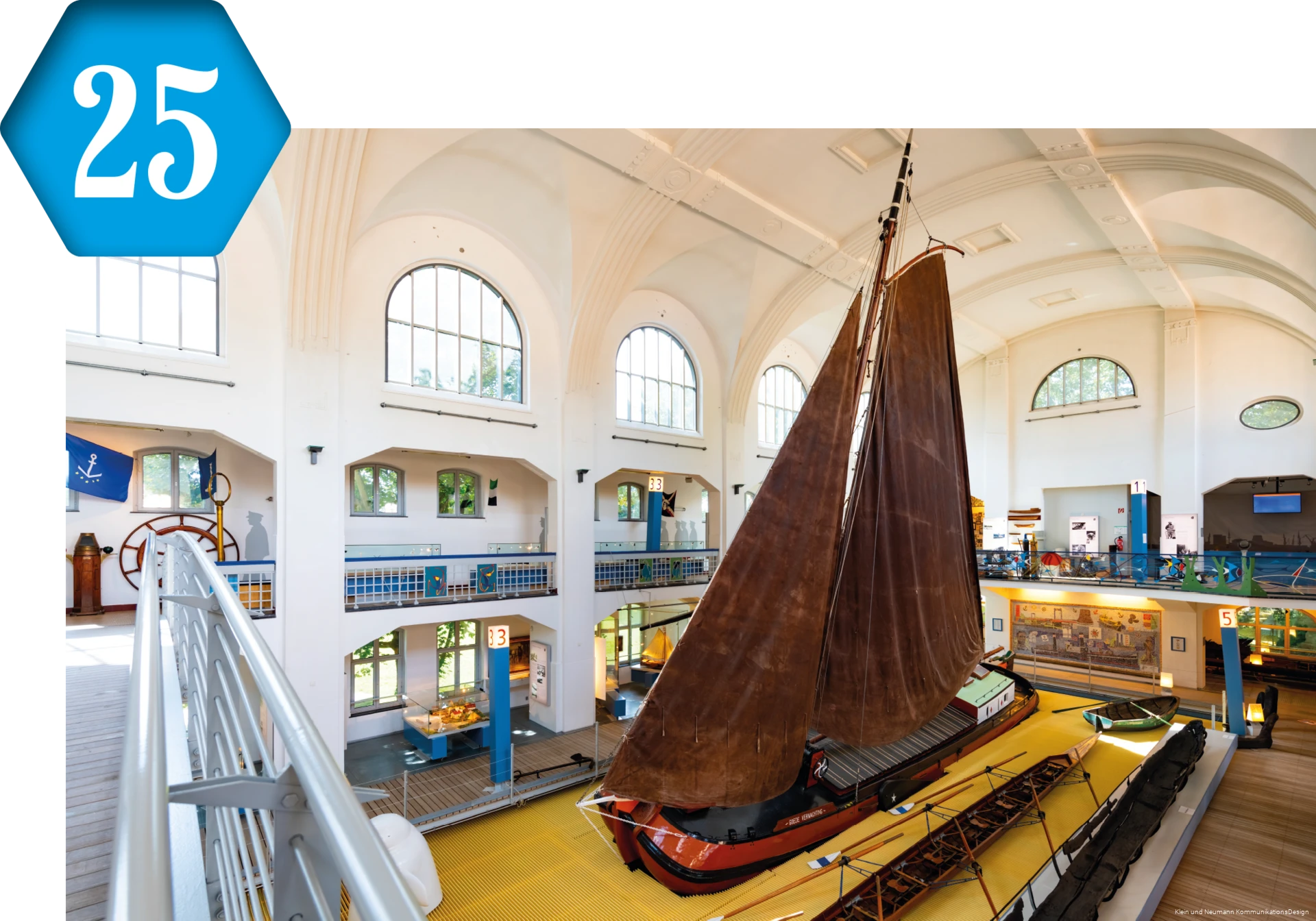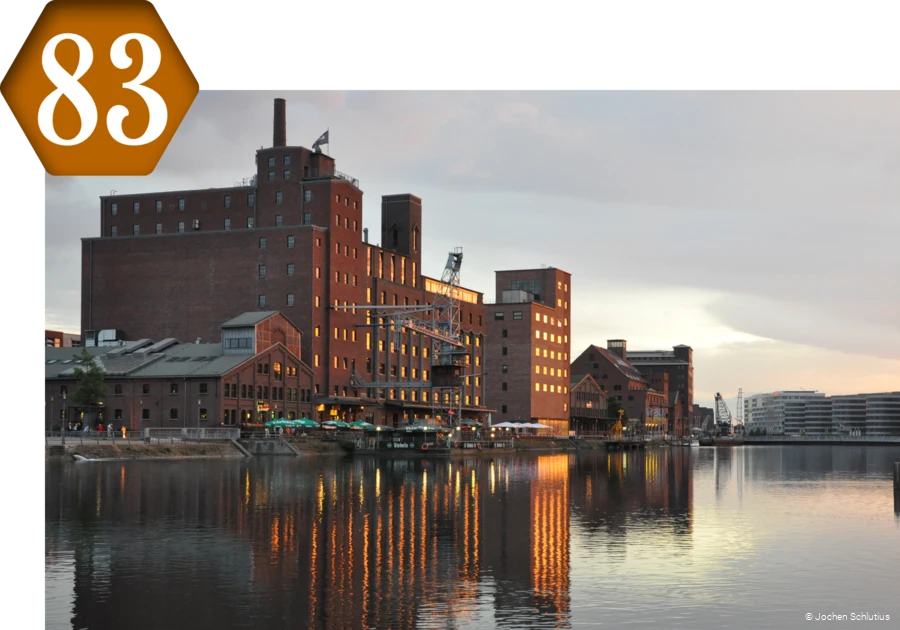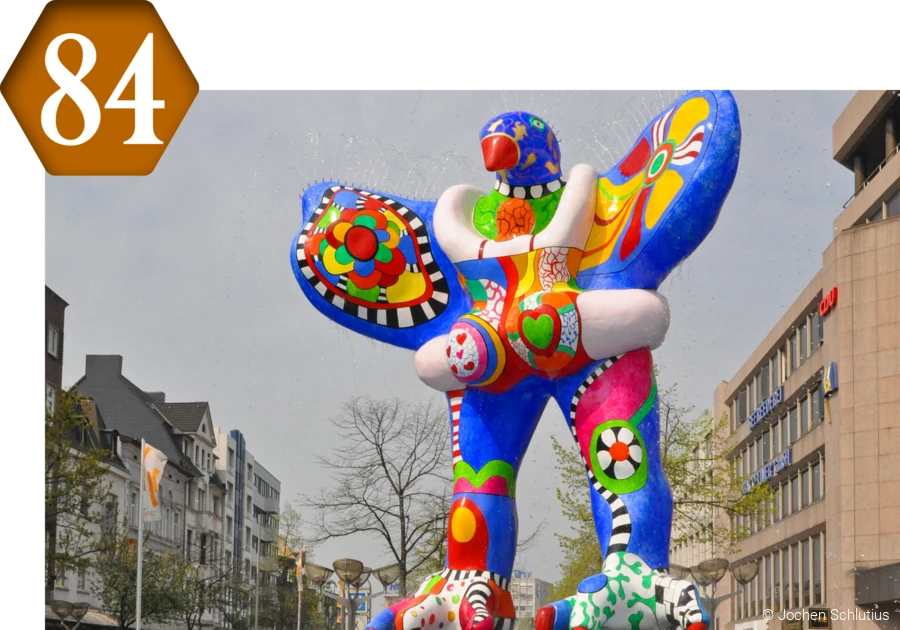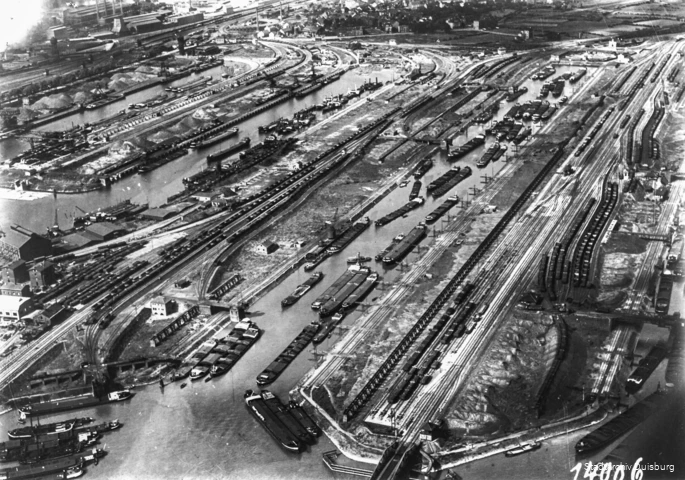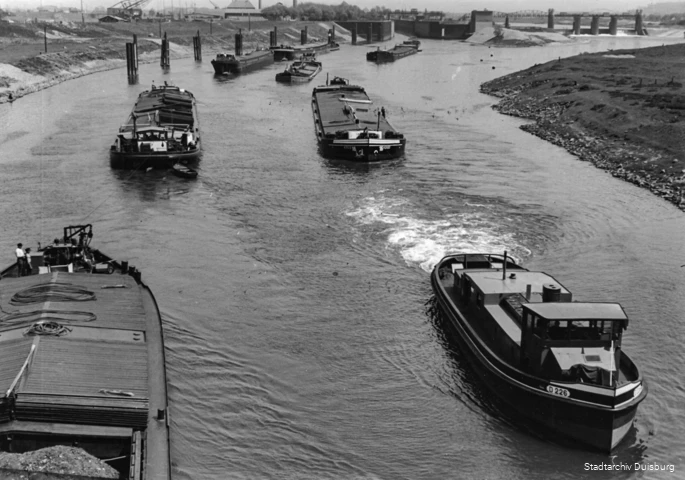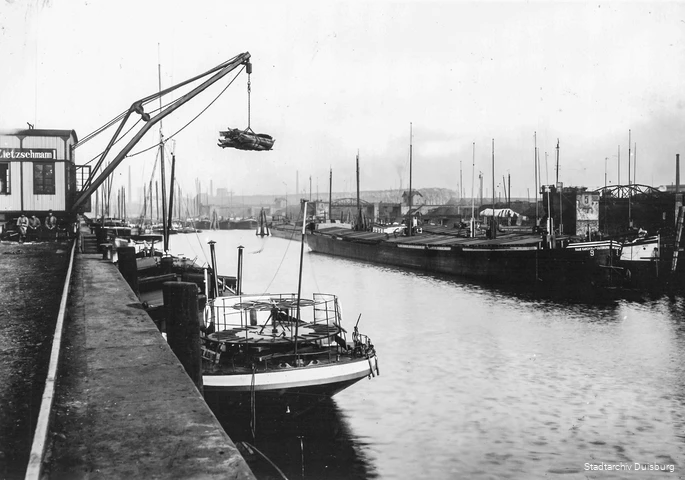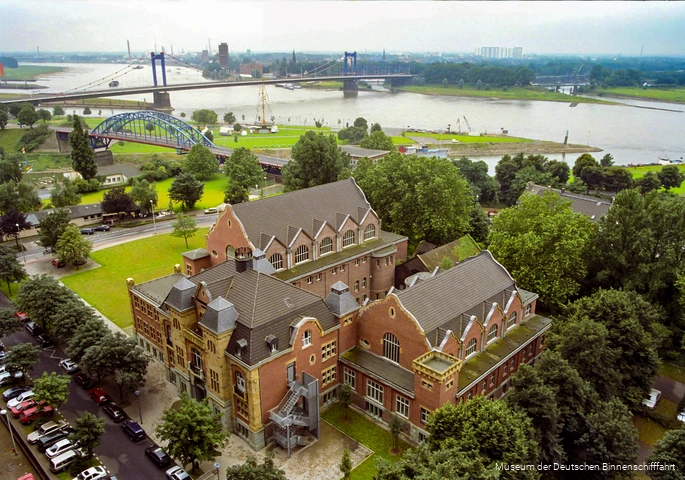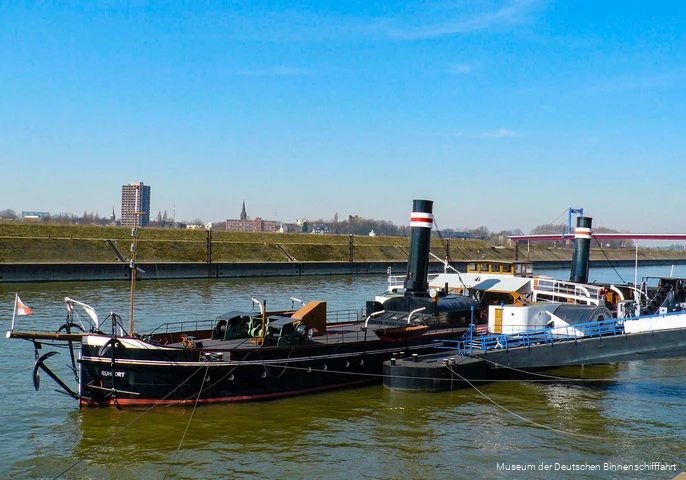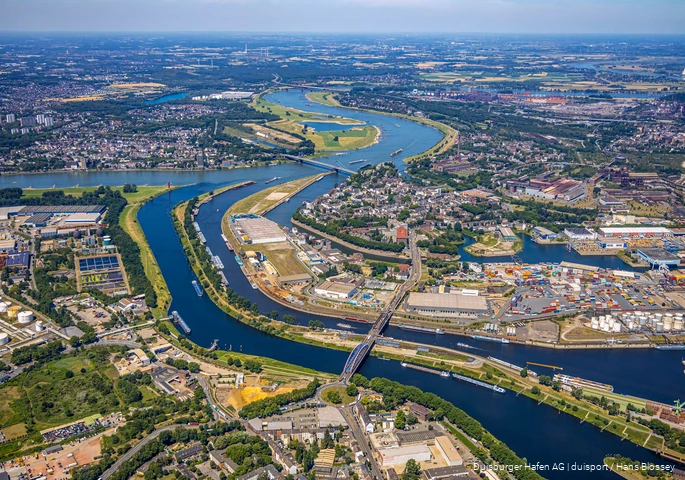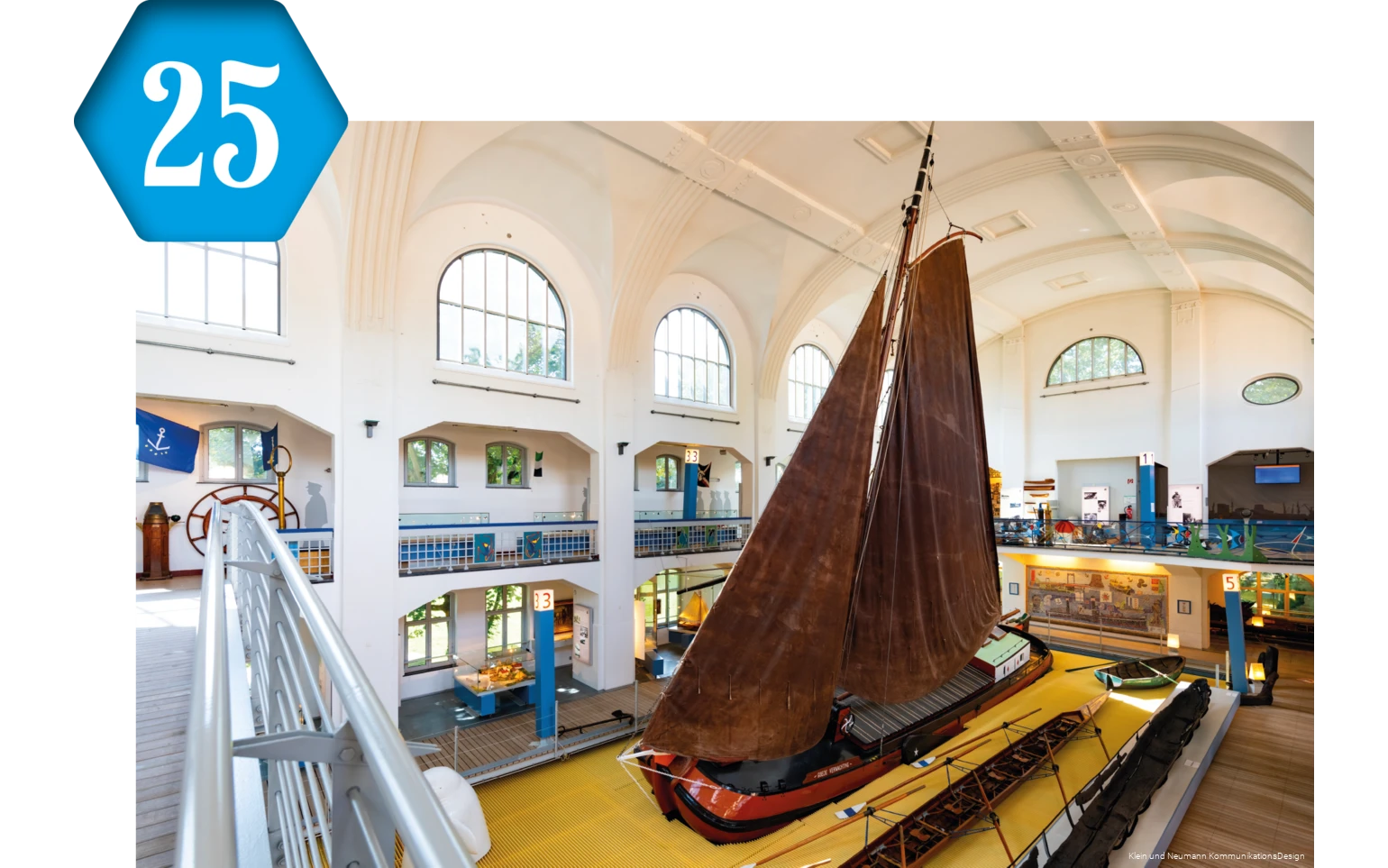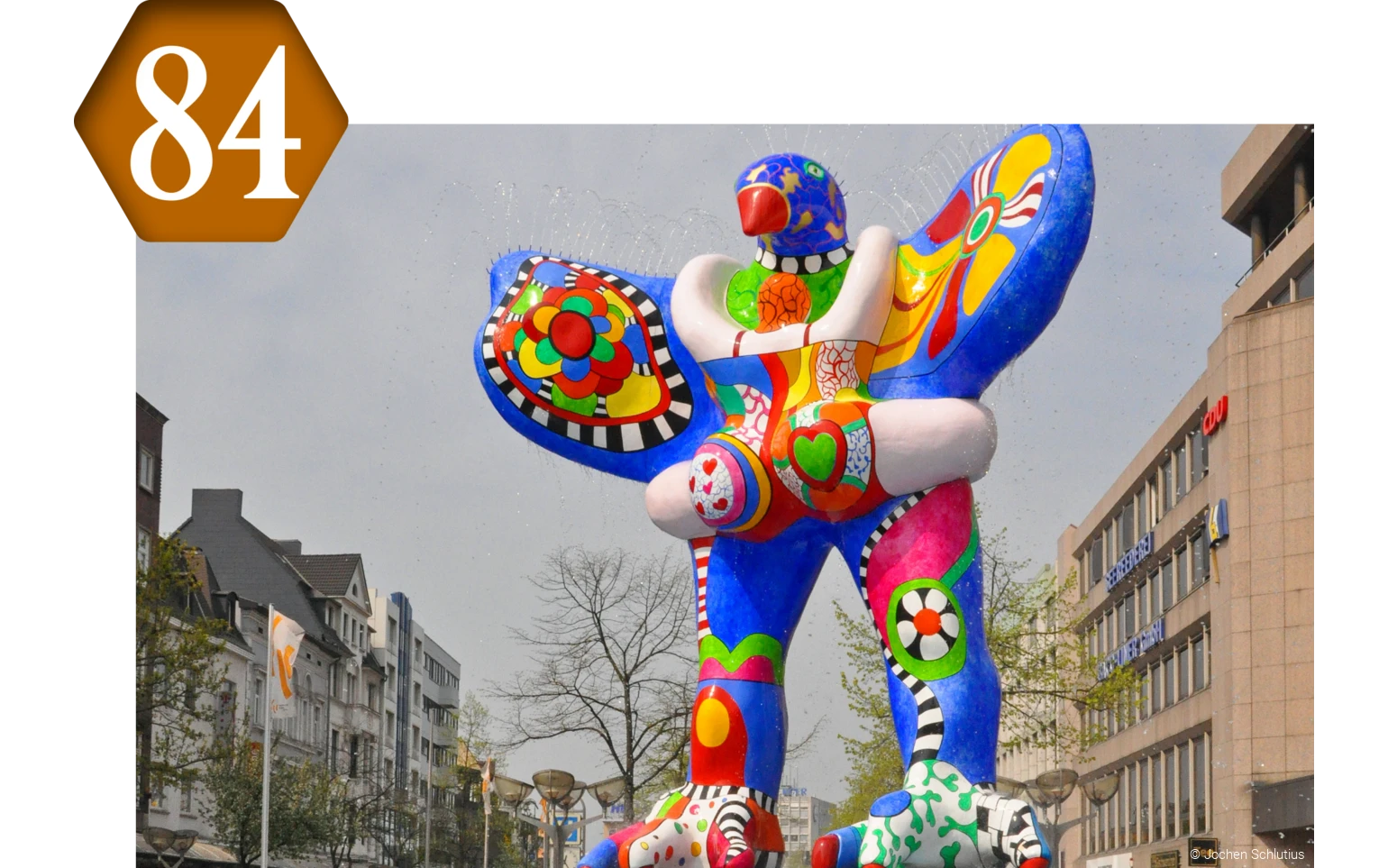The Ruhrort harbor [1926]
Museum der Deutschen Binnenschifffahrt
Beyond the Sauerland, the Ruhr is all about coal. Ruhr coal! From 1780, fully loaded barges travel from the mines near Witten and Mülheim to Ruhrort at the mouth of the Rhine. The museum, whose multimedia exhibition is spread over the three floors of a magnificent art nouveau bathhouse from 1908, brings the historic "river highway" Ruhr back to life in one section ...
- Infotext read more
-
… The exhibition, ranging from stone-age dugout canoes to modern pushing boats, features a walk-in replica of a river barge, which reveals how a family of boatmen lived. Three museum ships within walking distance include the last surviving wheeled tugboat on the Rhine. Also nearby: Europe's largest inland port, made accessible to the industries of South Westphalia in 1861 by the Ruhr-Sieg railway.
By then, the Ruhraaken, collecting the coal deposited on the slopes of the river, are already past their prime. Ruhraaken? These are barges some 34 metres long and five metres wide, with their shallow draught perfectly adapted to the occasionally low level of the Ruhr. They pick up the coal where the mines "lay it down": at the end of the cart tracks or narrow-gauge railways to the banks of the Ruhr. Since the barges lack any propulsion, they drift downstream with the current – sometimes under sail – and are pulled upstream by tow horses.
The boom of the port in Ruhrort, today home to the German Inland Waterways Museum, is closely linked to the confluence with the Rhine and the transformation of the Ruhr region into an industrial conurbation. Coal from the mines in the county of Mark is reloaded here and shipped onwards, for example to the Netherlands. Other bulk goods such as iron ore, building materials and timber are also transferred here to ships on the Lower Rhine. That this business is profitable is illustrated by the museum building itself, donated as a baths by a managing partner of the Ruhrort company Franz Haniel & Co – a venture that started as a coal trader.
Until 1860, the Ruhr remains one of the region's main transport routes, shipping about half of the Ruhr District's mined coal. However, due to countless locks, highly volatile water levels and frequent icy conditions, the river quickly falls behind the competing railway. In contrast, rail transport adds to the success of the ports of Ruhrort and Duisburg, which are merged in 1905.
Steel Time Travel Destinations Nearby
The "Steel Time Travelers" Luise & Alfred: Museum der Deutschen Binnenschifffahrt
Al:
Ruhrort is a real fishing village! There it goes comfortably - like with you in the sour country! ...
- Full dialog text
-
Al: Ruhrort is a real fishing village! There it is cozy - like with you in the Sauerland!
Lu: Only because we breed fish at our clear brooks? Are you making fun of me again?
Al: You don't sail ships - at most paper boats or nutshells in the moat! Ahoy!
Lu: And you launch steamers in the public baths, Captain Alfred?
Al: Now let's be serious! Without the steamers on the Rhine and Ruhr, the locks and canals ... how could the Ruhr region have achieved world fame without waterways and inland waterway vessels?
Lu: I thought you rowed according to the English model, cooked steel according to the English model ...
Al: Yes, yes ... and unfortunately we didn't invent the steamship either. What the heck! In the meantime, we have long since overtaken the English, and we now supply the big wide world by ship - from the largest inland port of all time!
Lu: Oh dear! Is it starting again!?
Visitor information
Address:
Apostelstr. 84
47119 Duisburg
Phone0203/28394140
service@binnenschifffahrtsmuseum.de
www.binnenschifffahrtsmuseum.de
Opening hours:
Tue-Sun: 10 a.m. - 5 p.m.
Ships: October - Easter closed
![]()
![]()
![]()
![]()
![]()
